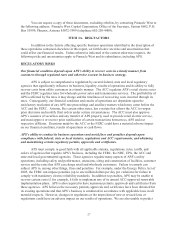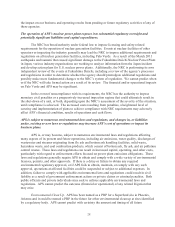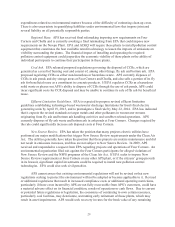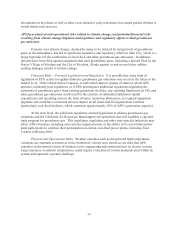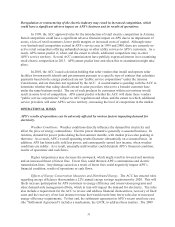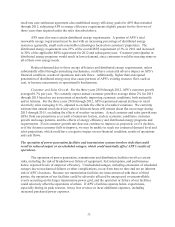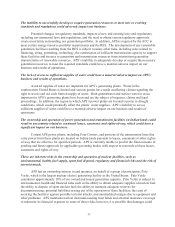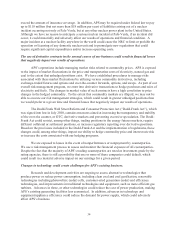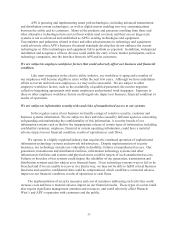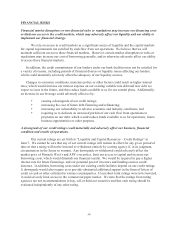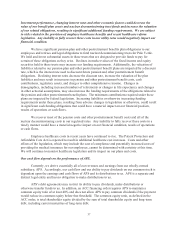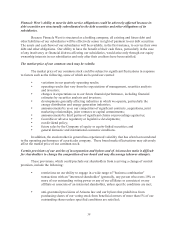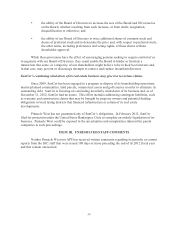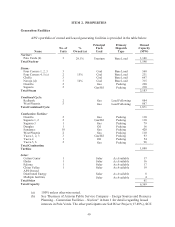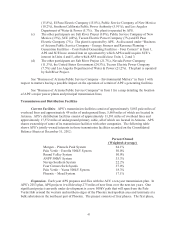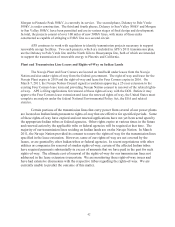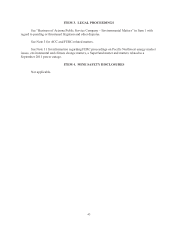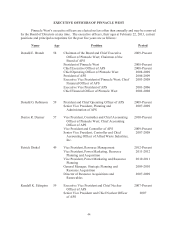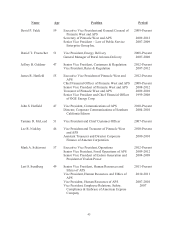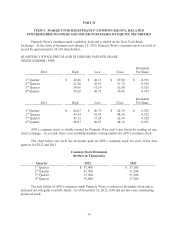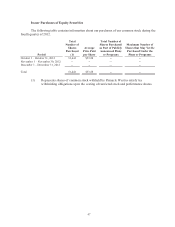APS 2012 Annual Report Download - page 61
Download and view the complete annual report
Please find page 61 of the 2012 APS annual report below. You can navigate through the pages in the report by either clicking on the pages listed below, or by using the keyword search tool below to find specific information within the annual report.37
Investment performance, changing interest rates and other economic factors could decrease the
value of our benefit plan assets and nuclear decommissioning trust funds and increase the valuation
of our related obligations, resulting in significant additional funding requirements. We are subject
to risks related to the provision of employee healthcare benefits and recent healthcare reform
legislation. Any inability to fully recover these costs in our utility rates would negatively impact our
financial condition.
We have significant pension plan and other postretirement benefits plan obligations to our
employees and retirees and legal obligations to fund nuclear decommissioning trusts for Palo Verde.
We hold and invest substantial assets in these trusts that are designed to provide funds to pay for
certain of these obligations as they arise. Declines in market values of the fixed income and equity
securities held in these trusts may increase our funding requirements. Additionally, the valuation of
liabilities related to our pension plan and other postretirement benefit plans are impacted by a discount
rate, which is the interest rate used to discount future pension and other postretirement benefit
obligations. Declining interest rates decrease the discount rate, increase the valuation of the plan
liabilities and may result in increases in pension and other postretirement benefit costs, cash
contributions, regulatory assets, and charges to other comprehensive income. Changes in
demographics, including increased numbers of retirements or changes in life expectancy and changes
in other actuarial assumptions, may also increase the funding requirements of the obligations related to
the pension and other postretirement benefit plans. The minimum contributions required under these
plans are impacted by federal legislation. Increasing liabilities or otherwise increasing funding
requirements under these plans, resulting from adverse changes in legislation or otherwise, could result
in significant cash funding obligations that could have a material impact on our financial position,
results of operations or cash flows.
We recover most of the pension costs and other postretirement benefit costs and all of the
nuclear decommissioning costs in our regulated rates. Any inability to fully recover these costs in a
timely manner would have a material negative impact on our financial condition, results of operations
or cash flows.
Employee healthcare costs in recent years have continued to rise. The Patient Protection and
Affordable Care Act is expected to result in additional healthcare cost increases. Costs and other
effects of the legislation, which may include the cost of compliance and potentially increased costs of
providing for medical insurance for our employees, cannot be determined with certainty at this time.
We will continue to monitor healthcare legislation and its impact on our plans and costs.
Our cash flow depends on the performance of APS.
Currently, we derive essentially all of our revenues and earnings from our wholly-owned
subsidiary, APS. Accordingly, our cash flow and our ability to pay dividends on our common stock is
dependent upon the earnings and cash flows of APS and its distributions to us. APS is a separate and
distinct legal entity and has no obligation to make distributions to us.
APS’s debt agreements may restrict its ability to pay dividends, make distributions or
otherwise transfer funds to us. In addition, an ACC financing order requires APS to maintain a
common equity ratio of at least 40% and does not allow APS to pay common dividends if the payment
would reduce its common equity below that threshold. The common equity ratio, as defined in the
ACC order, is total shareholder equity divided by the sum of total shareholder equity and long-term
debt, including current maturities of long-term debt.


